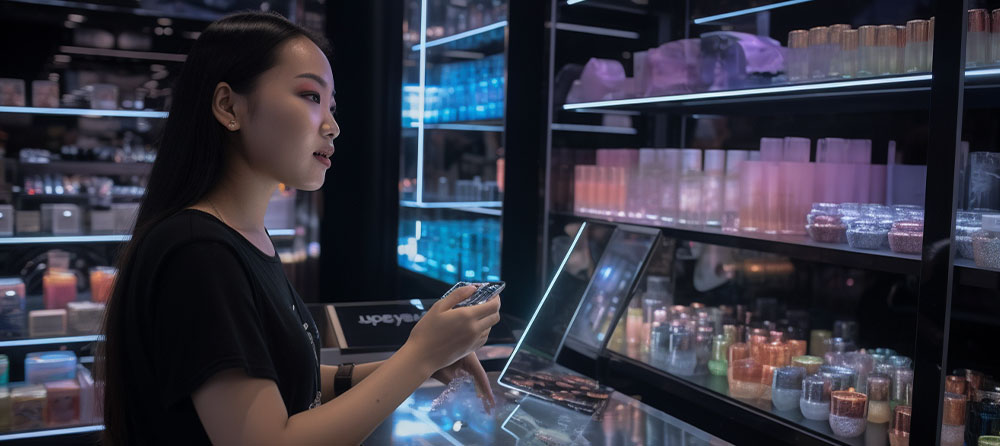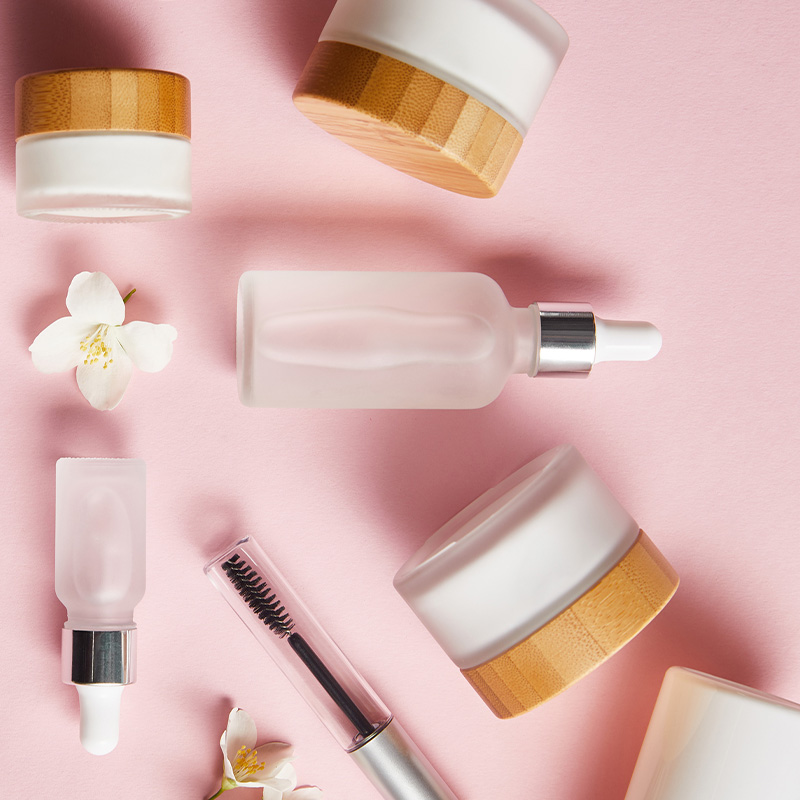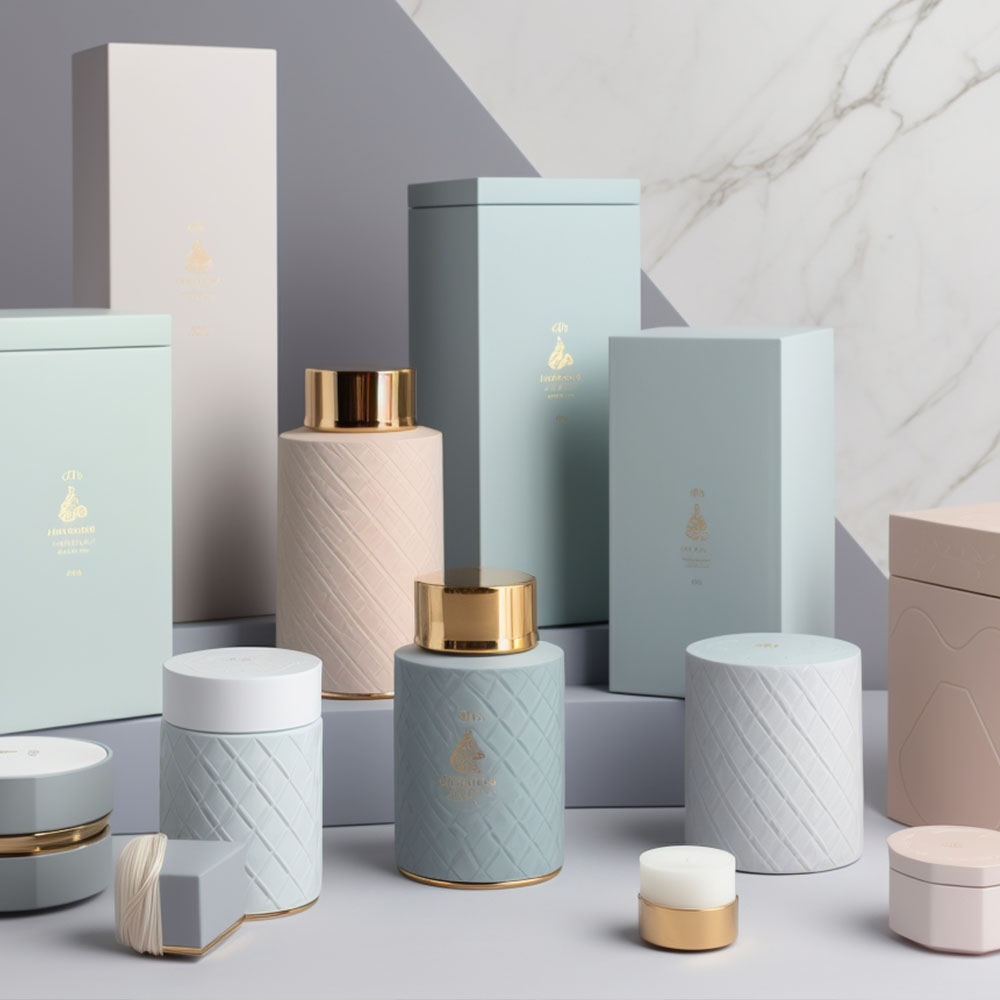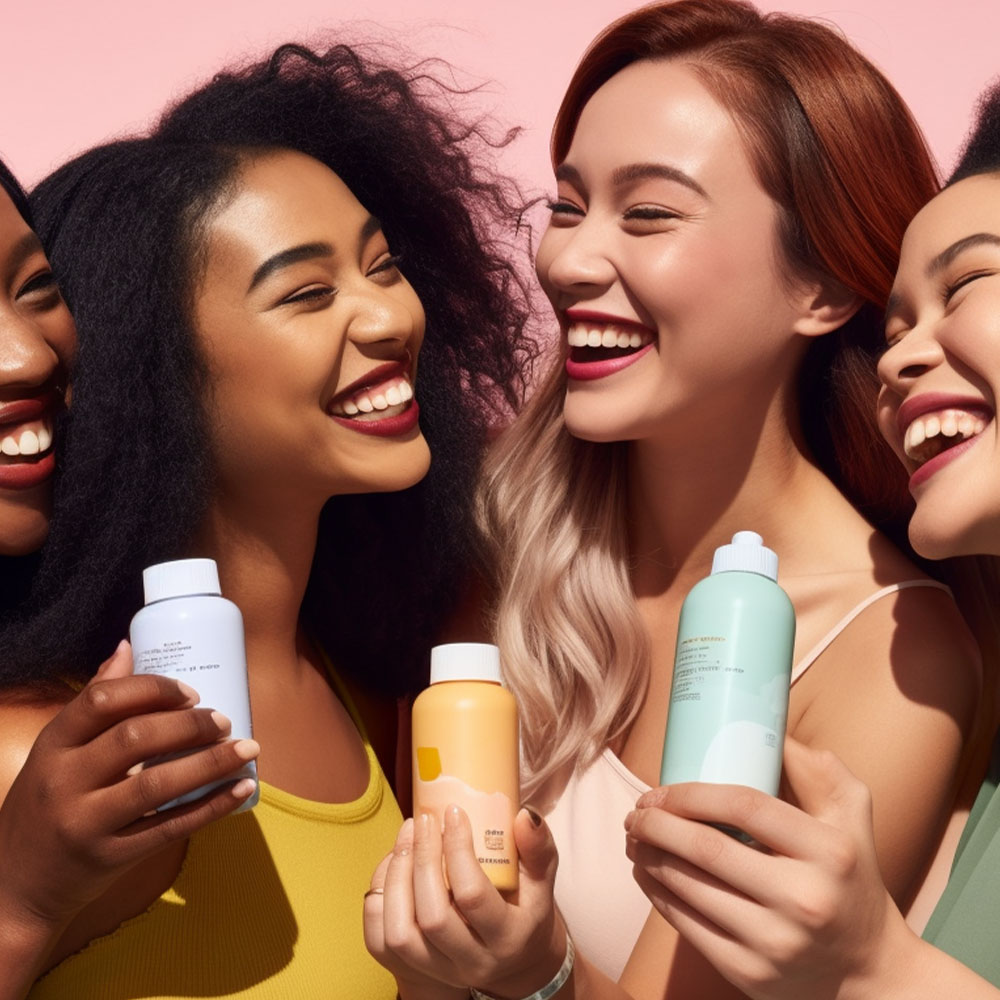
Are you ready for the future of beauty brand marketing? As a beauty brand marketing analyst, I have been keeping my eyes on some exciting trends and predictions that are set to revolutionize this industry. From social media to sustainability, we can expect significant changes in how brands market themselves and connect with consumers.
Firstly, let’s talk about social media. With over 3 billion active users worldwide, it is no surprise that social media has become an essential platform for beauty brand marketing. In the coming years, we expect to see more emphasis on influencer collaborations and user-generated content. Brands must also stay ahead of the curve by utilizing new features such as augmented reality filters and shoppable posts. Secondly, sustainability is here to stay. Consumers are becoming increasingly aware of their environmental impact and want products that align with their values. Therefore, beauty brands must prioritize eco-friendly packaging, ingredients sourced from sustainable sources, and ethical manufacturing practices to remain relevant in this space. Stay tuned for more insights into the future of beauty brand marketing!
The Power Of Social Media In Beauty Brand Marketing
Social media has become a game-changer in the beauty industry, with its impact felt across all brand marketing aspects. Today’s consumers are more informed and connected than ever, thanks to social media platforms such as Instagram, TikTok, and YouTube. As a result, brands have had to adapt their marketing strategies to keep up with this trend.
One way brands have leveraged social media’s power is through influencer marketing. Influencers can boost a brand’s message by sharing their product experiences and opinions with their followers. The power of influencer marketing lies in its ability to come across as a trusted recommendation, rather than an advertisement.
Moreover, social media allows for direct engagement between brands and consumers. This level of interaction fosters more robust relationships between them, leading to increased customer loyalty and advocacy. Social media plays a crucial role in catering to consumers’ desires for personalized experiences that meet their individual needs and preferences.
In conclusion, social media has forever changed how beauty brands approach marketing. Its impact cannot be ignored or underestimated – from influencing consumer behavior to shaping brand messaging. Moreover, it will continue to evolve rapidly, creating new opportunities and challenges for marketers who must stay ahead of the curve if they hope to succeed in this dynamic landscape.
Influencer Collaborations: Building Trust And Engagement
Beauty brands have long relied on influencers to promote their products. However, consumers are becoming increasingly savvy about sponsored content, making it more challenging for beauty brands to build trust with their audience. One way that brands can overcome this challenge is by focusing on influencer authenticity. Gone are the days of one-off collaborations where influencers post a photo or video featuring a product. Instead, today’s consumers want to see real people using the products they’re promoting daily.
To achieve this level of authenticity, many beauty brands are turning towards long-term partnerships with influencers. By collaborating over an extended period, the brand and influencer can better understand each other’s values and goals. These relationships allow influencers to create natural and organic content while still showcasing the brand’s offerings. Additionally, long-term collaborations enable brands to track campaigns’ performance over time and adjust as needed.
However, not all influencer collaborations are created equal. Beauty brands must work only with those who align closely with their values and mission to resonate with today’s consumers truly. Partnering with influencers who truly believe in the brand is crucial to establish long-term engagement because consumers can easily detect insincerity.
In conclusion, influencer marketing remains an integral part of the future of beauty brand marketing strategy. To achieve success in influencer marketing, it’s crucial to find genuine voices that are willing to collaborate for extended periods, rather than one-time ad posters. Brands must develop genuine relationships with influencers who share their values to appeal to discerning customers seeking trustworthy recommendations.
User-Generated Content: Harnessing The Voice Of The Consumer
As beauty brands continue to evolve, so do their marketing strategies. User-generated content (UGC) has become a powerful tool for fostering consumer engagement and brand loyalty. By tapping into their followers’ creativity, companies can showcase genuine experiences with their products, creating relatable content that resonates with potential customers.
The impact of UGC is undeniable. Millennials trust user-generated content as a reliable source to determine the value of a product or service, as per recent studies. Additionally, social media platforms like Instagram have simplified the process of sharing beauty product reviews. As a result, more and more brands are integrating UGC into their marketing campaigns.
However, measuring the impact of UGC can be tricky. Likes and shares are not enough to measure success in UGC; it requires advanced analytics tools to track how many people buy a product after seeing it. Companies must also ensure they have effective moderation strategies to avoid negative feedback from detracting from positive aspects of user-generated content.
To maximize the effectiveness of UGC campaigns, beauty brands should consider the following:
- Offering incentives for users who submit high-quality content
- Partnering with influencers or micro-influencers who align with company values
- Encouraging creative participation by hosting contests or giveaways
- Showcasing diverse perspectives through reposting user-created content from a range of individuals
- Integrating user-generated content across multiple channels, including website landing pages and email newsletters
Overall, incorporating user-generated content into beauty brand marketing plans offers numerous benefits but requires careful consideration and analysis to measure its l impact on sales growth and consumer attitudes toward the brand.
Augmented Reality Filters: Creating Interactive Experiences
Augmented reality (AR) filters are revolutionizing the beauty industry by providing customers with interactive engagement and personalized experiences. AR technology enables consumers to use their smartphones or tablets to virtually try on makeup, hairstyles, and even nail polish colors before making a purchase. This allows them to experiment with different looks without physically touching products.
These filters offer an innovative way for beauty brands to create engaging content that resonates with their target audience. By leveraging AR technology, brands can provide immersive experiences that allow customers to interact with their products in ways previously impossible. Moreover, these filters offer a more personalized experience than traditional advertising methods.
One of the main advantages of using AR filters is the ability to track customer behavior and preferences over time. For example, brands can collect data about which products customers are trying on virtually and how they engage with those products. This information can tailor marketing campaigns and product offerings based on individual needs.
Incorporating AR filters into marketing strategies also helps build brand loyalty by creating a memorable customer experience. When individuals feel connected to a brand through an interactive experience, they are more likely to return for future purchases. As such, incorporating augmented reality into digital marketing initiatives has become increasingly crucial for beauty brands looking to stand out in a crowded marketplace.
| Pros | Cons |
|---|---|
| Provides interactive engagement | Requires investment in technology |
| Offers personalized experiences | It can be difficult to measure ROI |
| Allows for tracking customer behavior and preferences | It can be challenging to measure ROI |
| Builds brand loyalty | Requires ongoing maintenance |
Using augmented reality filters in a marketing plan can help beauty brands connect with consumers. These tools enable companies to create unique and unforgettable experiences while collecting valuable data about future business decisions. With continued advancements in AR technology, we can expect this trend only continues its upward trajectory in popularity.
Shoppable Posts: Streamlining The Path To Purchase
Shoppable Posts help streamline the path to purchase and make it easier for customers to find what they’re looking for. We’ll need to stay ahead of the trends to ensure we’re creating engaging and successful posts. I predict shoppable posts will become increasingly popular, and beauty brands must use this technology to remain competitive. Ultimately, this could be a game-changer for beauty brand marketing.
Shoppable Posts
As social media reigns supreme in marketing, beauty brands seek fresh ways to connect with customers and boost sales. Shoppable posts are one of the latest trends, enabling purchases within Instagram. Social commerce is projected to rise and could hit $600 billion by 2023.
Instagram marketing remains a priority for beauty brands seeking to leverage this trend. Shoppable posts simplify purchases, allowing shoppers to browse and buy with ease. Integrating this feature into their social media plan can generate smooth shopping and boost profits, encouraging customer loyalty.
One of the most significant advantages of shoppable posts is their ability to provide real-time metrics on consumer behavior. Brands can track top-performing products on social media and use that data to develop future items or campaigns. Furthermore, the data can pinpoint influential figures and aid in teaming up with them for sponsored content or collaborations.
Shoppable posts will surge in social media as beauty brands pursue creative ways to boost sales. Tech may add streamlined features for purchases.
Streamlining Path To Purchase
Social commerce is critical for beauty brands to connect and increase sales. Shoppable Instagram posts simplify purchases while offering data insights.
One of the most significant advantages of shoppable posts is their frictionless checkout experience. Customers can browse and purchase their favorite products without leaving the app, creating a seamless shopping experience that increases brand loyalty. In addition, as technology evolves, we expect personalized recommendations based on previous purchases and augmented reality try-ons to further streamline this process.
Beauty brands must focus on streamlining the path to purchase to capitalize on the growing social commerce trend. Shoppable posts offer an innovative way for brands to connect with consumers and drive revenue by seamlessly blending content and commerce. Brands that prioritize this feature will be able to create an immersive online shopping experience that keeps customers coming back time after time.
In conclusion, shoppable posts are poised to play a significant role in the future of beauty brand marketing. By incorporating this feature into their overall social media strategy, brands can increase revenue and gain valuable insights into consumer behavior. In addition, the ability to personalize recommendations and provide a frictionless checkout experience will be critical for success in an industry where innovation is vital.
Sustainability In Beauty: Meeting Consumer Demands For Eco-Friendly Products
The shoppable posts have taken the beauty world by storm, but that’s not where it ends. The future of marketing lies in sustainability and meeting consumer demands for eco-friendly products. With the Green Beauty Revolution gaining momentum, brands must adapt to stay relevant.
Eco-friendly innovations are no longer a trend; they are here to stay. Consumers are becoming more conscious about their impact on the environment, which translates into their purchasing habits. Brands must embrace this shift and offer sustainable options that align with their values.
One way to meet these demands is through packaging innovation. Brands can explore alternative materials such as biodegradable or compostable plastics, refillable containers, and even edible packaging! These initiatives will help reduce waste while providing consumers an immersive sensory experience.
Another area where brands can make a difference is through ingredient sourcing. Ethically sourced ingredients like sustainably harvested plant extracts or cruelty-free animal-derived ingredients resonate well with consumers who prioritize environmental responsibility. When executed correctly, these initiatives can position your brand as socially responsible and environmentally friendly.
As we move towards a greener future, brands that don’t keep up risk getting left behind. Incorporating eco-friendly practices into branding strategies isn’t just good for the planet and brilliant business sense. By adopting sustainable practices at every level of operation, companies can attract loyal customers and contribute positively to society without sacrificing profits.
Eco-Friendly Packaging: Reducing Waste And Carbon Footprint
Eco-Friendly Packaging: Innovations, Challenges
One of beauty brands’ most significant challenges is reducing waste and carbon footprint while delivering exceptional products. Eco-friendly packaging has become a buzzword in the industry as consumers become more conscious about their environmental impact. Brands that can innovate sustainable solutions will be at the forefront of this movement.
Innovations in eco-friendly packaging have come a long way from using recycled materials. There are now biodegradable options that break down naturally without harming the environment. Brands have also started using refillable containers, reducing waste and creating a sense of exclusivity for customers who own them. These innovations provide a unique opportunity for brands to showcase their commitment to sustainability while adding value to their products.
While eco-friendly packaging has many benefits, it presents some challenges for brands. For example, these packages may cost more than traditional ones due to using unique materials or manufacturing processes. Additionally, certain types of eco-friendly packaging may not be suitable for all products, such as those with liquid contents or fragility concerns. Nevertheless, these obstacles should not deter brands from exploring sustainable alternatives.
As consumer interest in environmental issues grows, so will eco-friendly packaging demand. Beauty brand marketers must stay ahead of the curve by finding innovative ways to meet customer demands while reducing waste and carbon footprints. By embracing new technologies and creative thinking, they can create effective solutions that benefit both people and the planet, ultimately leading to a brighter future for everyone involved!
Ethical Manufacturing Practices: Ensuring Fair Labor And Supply Chain Transparency
As we move towards a more sustainable and eco-friendly approach to beauty brand marketing, we must address the ethical practices involved in manufacturing. Like how each ingredient plays an essential role in creating a beauty product, everyone involved in its production deserves fair treatment.
We can achieve this by ensuring that our supply chains follow fair trade principles where workers are paid fairly and have safe working conditions. Beauty brands must also take responsibility for their carbon footprint by using renewable energy sources and reducing waste during production.
It’s not just about treating people right; it’s also about being mindful of the materials used in creating these products. Eco-friendly materials such as recycled plastics, bamboo, and glass should be considered when designing packaging. Not only do they reduce waste, but they’re also biodegradable, meaning they won’t harm the environment long after their use is over.
By incorporating ethical manufacturing practices into our strategy, we can build trust with consumers who care about social justice issues while contributing positively to the planet. And as conscious consumerism continues to rise, doing so will undoubtedly pay off both morally and financially.
Ingredients From Sustainable Sources: Nurturing The Planet And The Skin
The beauty industry is undergoing a transformational shift towards sustainability. Consumers are increasingly aware of the environmental impact of their choices, leading to a rise in demand for eco-friendly products. This has given birth to the ‘Green beauty’ concept, which focuses on using ingredients from sustainable sources.
The trend of Farm-to-face skincare is gaining momentum as well. Customers want transparency about where and how their products are made, which extends to the origins of their ingredients. Locally sourced organic ingredients benefit the planet and have numerous benefits for our skin. They contain fewer chemicals, retain more nutrients, and support local farmers.
As consumers become more informed about synthetic cosmetics’ harmful effects on themselves and the environment, they will continue to gravitate towards natural and environmentally conscious brands. Hence companies must invest in sourcing high-quality raw materials ethically while working closely with local communities to ensure fair trade practices.
In conclusion, Using sustainably-sourced ingredients isn’t just an ethical responsibility; it’s necessary for survival in today’s world. To remain relevant and competitive, brands must adapt to changing consumer demands by embracing Green Beauty principles and implementing Farm-To-Face methods into their supply chains.
The Future Of Beauty Brand Marketing: A Call To Action For Sustainable And Socially Conscious Practices
As the beauty industry continues to evolve, it has become increasingly crucial for brands to embrace sustainable and socially conscious practices. Consumers are more aware than ever before of the impact their purchases have on both the environment and society as a whole. As such, they expect companies to take responsibility for their actions and make positive changes.
One way that beauty brands can meet this demand is through sustainability education. By providing customers with information about different products or ingredients’ environmental and social impacts, brands can empower them to make informed choices. This helps consumers make better decisions, and fosters trust between the brand and the customer.
However, brands must avoid greenwashing – making false or exaggerated claims about how eco-friendly a product or company is. Consumers can easily see through such tactics, which undermine credibility and harms their reputation. Instead, brands should implement genuinely sustainable practices throughout their business operations.
In conclusion, embracing sustainable and socially responsible practices isn’t just good for the planet – it’s also an opportunity for beauty brands to connect with consumers who value authenticity, transparency, and ethical behavior. By prioritizing sustainability education and avoiding greenwashing, companies can build strong relationships with customers while doing their part in creating a more environmentally friendly world.
Conclusion
As a beauty brand marketing analyst, I am confident that the future of this industry lies in sustainable and socially conscious practices. Consumers are becoming increasingly aware that their purchasing decisions impact the environment and society, and they expect brands to take responsibility for these impacts.
Beauty brands must adapt to these changing expectations to stay relevant and successful by prioritizing eco-friendly packaging, ethical manufacturing practices, and ingredients from sustainable sources. By doing so, not only will they be contributing positively to the planet and communities around them, but they will also be attracting consumers who prioritize these values when making their purchasing decisions. The question is: Are you ready to make this change?
The power of social media has allowed consumers to become more informed about what goes into their favorite products – from production methods to ingredient sourcing. Beauty brands must proactively address these concerns by adopting environmentally friendly practices and promoting transparency throughout their supply chains. Only then can we ensure a brighter future for both people and our planet. Let’s work together towards a more beautiful world!
Start building your brand with us today. Click here.









